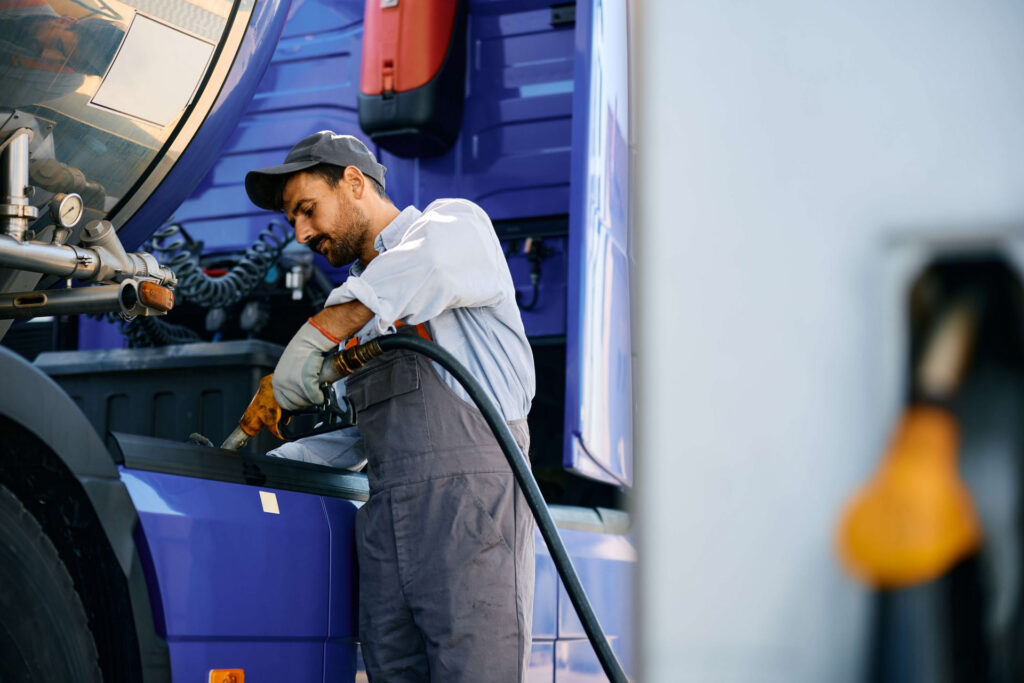How to Improve Fuel Economy in a Truck

Our Top Tips for Improving Fuel Economy
Did you know that, on average, truck and lorry drivers travel approximately 2,000 to 2,500 miles a week? This is a lot of distance to cover, and it comes at a significant cost, as the vehicle will drink a lot of fuel to support that mileage. However, it’s possible to take small steps and improve fuel efficiency.
- Cruise control: Employ cruise control whenever possible to mitigate unnecessary acceleration and deceleration. This feature is particularly effective on terrain that is flat, as that curbs slight adjustments to the accelerator pedal which are caused by uneven roads.
- Cruising speed: Higher speeds lead to increased fuel consumption. Each single mile and hour increment results in a fuel economy decrease of approximately 0.14 miles per gallon. Therefore, it’s more cost-effective to maintain a moderate cruising speed.
- Higher gears: Driving in the highest gear attainable helps with maximising fuel efficiency. Driving at faster speeds in lower gears can elevate fuel consumption by up to 45%.
- Idling: Limit engine idling only to instances where it is absolutely necessary, as idling seriously depletes fuel – around a gallon per hour of idling.
- Tyre pressure: Ensure truck tyres are adequately inflated to reduce rolling resistance. A mere 10% reduction in tyre pressure can increase fuel consumption by approximately 1%.
- Wheel and tyre alignment: Tyres should be aligned accurately to prevent unnecessary sideways movement. Even a minor misalignment can trigger substantial energy wastage.
- Air conditioning: It’s important to reserve air conditioning use for essential circumstances only, as each instance of use increases fuel consumption by up to half a mile per gallon. When you are travelling at lower speeds it’s worth opting for open windows as aerodynamic drag is reduced and therefore travel will prove more fuel-efficient.
- Aerodynamics: It’s possible to mitigate air and road resistance by investing in aerodynamic enhancements. For example, wind deflectors will curtail fuel consumption attributed to aerodynamic losses (around 20%).
- Cargo: Your truck will expend more energy to transport heavier loads, thereby consuming more fuel. Therefore, if you set an additional weight limit in the truck and trailer, you will contribute to the reduction in fuel consumption. Additionally, reduce the extras you take to reduce the overall weight of the truck.
- Petrol station: Try to work out a schedule to fill up with fuel at lower cost petrol stations. Many truck-specific sat nav systems have AI which will plan your route for you to include stops at the less-expensive garages along the way.
- Routing: Ensure that drivers use the most fuel-efficient route possible (if possible). There are often different ways to get to the same destination and the route that requires the least amount of driving will, of course, use less fuel so be more efficient.
- Load distribution: Make sure your load is physically distributed as evenly as possible. This will increase fuel efficiency as truck will require less effort to get moving. Keep the load as low and as level as possible.
The steps mentioned in this blog might not initially seem like much when taken individually, but in combination and across a large scale they will contribute to ensuring a transport budget stretches further. If you follow them in combination – and hear of any others and include them in your routine – then you’ll be keeping the idea of improving your fuel efficiency as a priority for your used truck and doing your bit to save money.